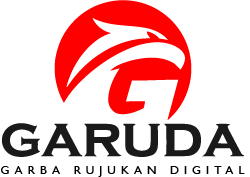OPTIMIZING CRITICAL THINKING SKILL THROUGH PEER EDITING TECHNIQUE IN TEACHING WRITING
DOI:
https://doi.org/10.22460/eltin.v7i1.p1-7Kata Kunci:
Writing, Peer Editing, Critical ThinkingAbstrak
The objective of the research was to know the description of how critical thinking skill can be optimized in teaching writing using peer editing technique. Critical thinking skill should be strengthened in writing class to elicit the writing class problem. Applying peer teaching technique was assumed can optimize the critical thinking skill in writing class. This research used descriptive qualitative method. It was conducted to the students of English Education Department students in paragraph based writing class. The writer took one of six classes as the sample of the research. The researcher used observation and documentation to know the description of the class situation. The data which was collected are in form documentation, observation and interview result and students writing and peer editing form which is analyzed descriptively. After the research conducted it can be drawn a conclusion that teaching writing using peer editing can optimize the students’ critical thinking skill. It was proven with the minimal error that was produced in the next writing produced and the increasing score of students’ writing. The mean score in the pre-research was 68.62, after the treatment conducted the mean score increased up to 72.90.Referensi
Barkley, E. (2005). Collaborative Learning Technique. San Francisco: Jossey Bass.
Betrand, D. (2013, June 15). Peer Editing in Composition for Multilingual Writers at the College Level. Retrieved from EWU: www.dc.ewu.edu/theses
Deni, A. R. (2011). Peer-editing Practice in the Writing Classroom: Benefits and Drawbacks. Advance in Language and Literacy Studies, 12.
Galvis, N. M. (2010). Peer Editing: a Strategic Source in EFL students' writing process. Colombian Applied Linguistics Journal, 5.
Hasibuan, K. (2013). Teaching Writing as Productive Skills. Journal of English and Arabic Language Teaching, 4,(2),, 169-190. Retrieved from www.media.neliti.com.
Lodico, M. (2006). Methods in Educational Research. San Francisco: Jossey-Bass.
Pharr, D. (2004). Writing Today: Contexts and Option for the Real World. New York: Mc.Graw Hill.
Philippot, R. (2009). Fostering Comprehensionin English Classes. New York: Guilford Press.
Sakolkarn Insai, T. P. (2017). More Heads Are Better than One: Peer Editing in a Translation Classroom of EFL Learners. PASAA, 8.
Snow, D. (2006). More than a Native Speaker. Maryland: Capitol Communication System. Inc.
Tompkins, G. E. (2003). Teaching Writing: Balancing Process and Product (4th ed.). Prentice Hall: Upper Saddle River .









